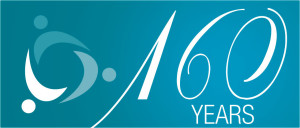“Let food be thy medicine,” said Hippocrates thousands of years ago. And, just like a lot of ancient wisdom, it still holds true today.
When it comes to aches and pains, specifically the kind that affects the joints, it’s well worth taking a look at how diet might impact how much discomfort we deal with each day.
Arthritis affects millions. Sometimes it involves the whole body as a systemic illness. For others it comes with the wear and tear of life and aging. Whether it’s rheumatoid arthritis or the more localized osteoarthritis variety, this condition can be life altering. Stiffness slows you down, ordinary tasks become a challenge, and the pain takes the joy out of life.
Managing arthritis might mean taking medication and modifying your lifestyle, but why not start at the beginning with our daily diets.
So here are two lists: foods to include, and those you might want to limit, as well as their specific links to joint pain and discomfort. As with any change in lifestyle, it’s a good idea to discuss your plan with your healthcare provider.
Try Including (Increasing) These:
OMEGA 3 FATTY ACIDS – decrease inflammation in arthritic joints. The best sources are salmon, sardines, tuna, trout, herring, mackerel, walnuts, almonds and flaxseed. There was study done close to home at Albany Medical College that showed that intake of Omega 3s significantly decreased the tenderness of inflamed joints.
OLIVE OIL – Contains polyphenol, an antioxidant that protects the body against inflammation. Use it in cooking instead of butter or other vegetable oils. Use it as a base for a fresh dressing for salads and cooked veggies.
FOCUS ON FRUITS – Pineapple contains bromelain, which reduces the swelling of inflammation. Other helpful fruits are grapes (particularly the skins), apples, and fruits rich in Vitamin C, such as berries, peaches, mango, kiwi, oranges and cantaloupe. Vitamin C also helps heal damaged cartilage in arthritic joints.
MORE VEGGIES – High intake of beta-cryptoxanthin, zeaxanthin, lutein, lycopene and beta-carotene correlate with lower incidence of certain types of arthritis. Find these in foods like: red bell peppers, cilantro, and corn. Add lots of greens and a few sweet potatoes.
SPICE IT UP! – Tumeric, the spice used in curry dishes, contains the powerful anti-inflammatory curcumin, which suppresses the enzymes responsible for inflammation in the body. Ginger also reduces joint tenderness and pain.
Try Limiting (or Avoiding) These:
MEATS – Although meat can provide valuable iron, B-vitamins, protein and zinc, a diet high in animal products is also high in saturated fats and Omega 6 fatty acids which are pro-inflammatory.
NIGHTSHADE VEGETABLES – Some folks are very sensitive to the effects of the nightshades: white potatoes, eggplant, peppers and tomatoes. Although there doesn’t appear to be a ton of research on this, you might want to notice if eating these foods increases your pain, swelling and inflammation, and then decide to limit how much you eat.
PROCESSED FOODS – A diet high in refined grains, sugar, and empty calories does very little to build good health, and contributes to excess weight gain. Since the joints act as supports for the body, asking them to carry around extra pounds every day won’t make them happy. Even five extra pounds can make a big difference in comfort for arthritic knees.
With any nutritional plan, self-awareness is key. Try to notice which foods seem to have a beneficial effect on how you feel physically and energetically. Eat more of those things that “agree” with you, and less of those that seem to make things worse.
A balanced diet, low in processed foods, and high in fruits and vegetables is a good health practice. When the body is already stressed with a chronic condition like arthritis, choosing the right food is essential.


